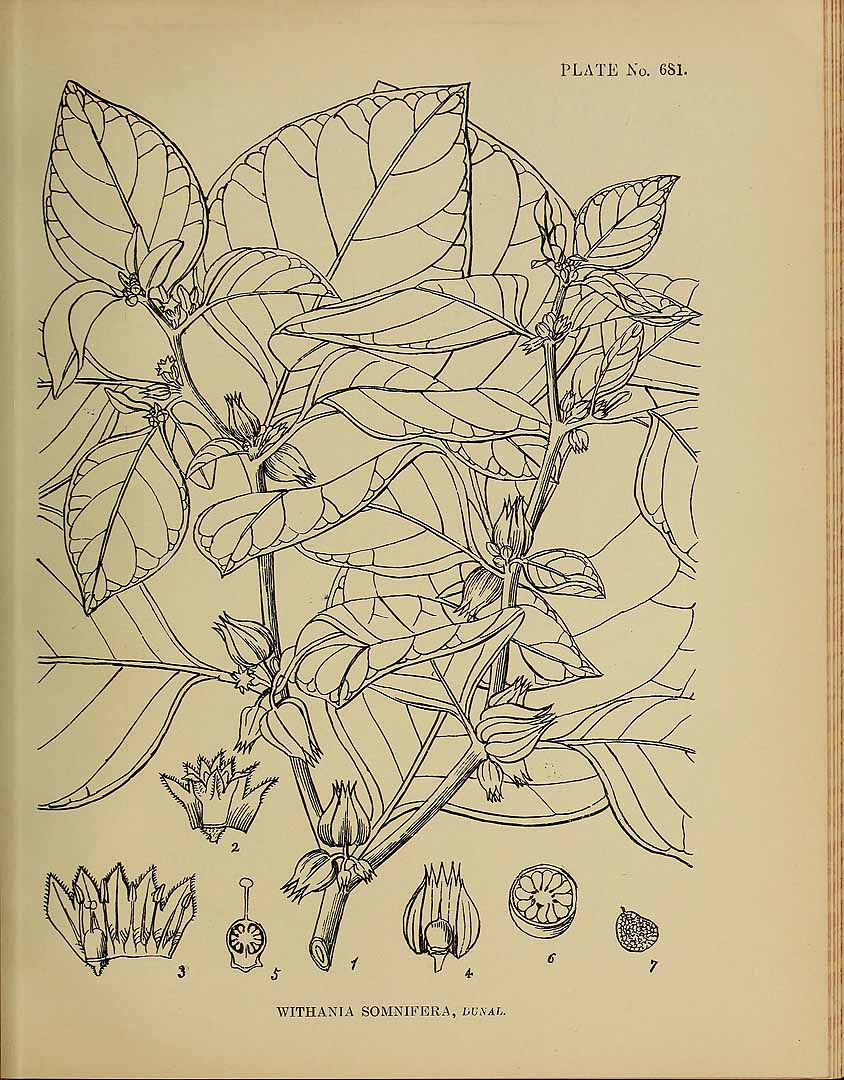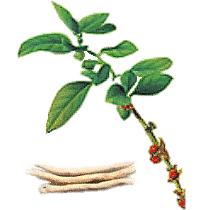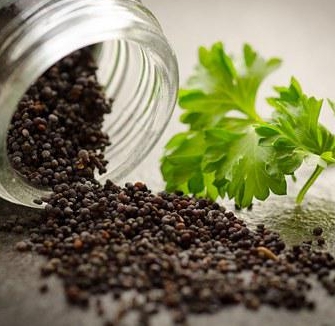
There are moments when life feels like a relentless tide—emails piling up, to-do lists growing longer, the quiet hum of anxiety just beneath the surface. In these moments, you may find yourself whispering, “I’m so tired,” or exclaiming, “I just can’t do this anymore.” If these words feel familiar, you are not alone—and you may be in need of an ancient ally: ashwagandha.
This humble root, used for thousands of years in Ayurvedic medicine, offers a deep exhale for the modern world. Known as a rasayana—a rejuvenative tonic—ashwagandha is cherished for its ability to strengthen our stress response, replenish depleted energy, and gently coax us back into balance. Like a steady hand on your shoulder or a warm mug between your palms, it reminds the body to rest, rebuild, and rise again.
At Golden Poppy, we view ashwagandha as more than just a supplement—it’s a nourishing companion for the nervous system, an herb that meets us where we are and gently encourages our return to center. Whether you’re navigating a season of burnout, recovering from illness, or simply feeling the weight of the world a little too heavily, ashwagandha offers grounded support with a softness that doesn’t demand.
This plant isn’t about pushing harder—it’s about rooting deeper. With qualities that are sweet, warm, and slightly bitter, ashwagandha harmonizes with the body’s rhythms, working slowly and steadily, like a stream carving a path through stone. It’s an herb for the long haul, restoring vitality not by stimulation, but by helping the body remember its inherent strength.
Let’s journey deeper into the medicine of ashwagandha: its rich history, potent energetics, and the many ways it can support you—from sleepless nights and scattered thoughts to hormonal shifts and adrenal fatigue. This is a plant with ancient wisdom and modern relevance—one that has earned its place in the heart of herbal practice.
MATERIA MEDICA: ASHWAGANDHA
Latin Name: Withania somnifera
 Common Names: Ashwagandha, winter cherry, withania, Indian ginseng
Common Names: Ashwagandha, winter cherry, withania, Indian ginseng
Family: Solanaceae
Botanical Description: A shrub that grows to about 2.5 – 5 feet high with a central stem. Leaves are ovate and alternate. Branches extend radially and are covered in fine hairs. The flowers are green on the outside and yellow inside. The ripe fruit are smooth orange-red berries and are inside calyx (a papery covering). Roots are long and brown.
Part used: Root
Harvesting Guidelines: Fruit and root are harvested in autumn from plants allowed to experience one full year of growth. Roots can be used fresh or dried
Constituents: Alkaloids, steroidal lactones (leaves), including withanolides, iron (Winston and Maimes, 2007; Chevallier, 2000).
Energetics & Tastes: Warm, moist, sweet, slightly bitter
Actions:
- Adaptogen
- Anti-Anxiety
- Anti-convulsant
- Anti-tumor
- Rejuvenative
- Reproductive tonic
- Tonic
- Immunomodulant
- Anti-inflammatory
- Antioxidant
- Nervine
- Antispasmodic
USES:
- Gynecology: Excellent post-partum energy tonic and as a stimulant for milk production. Tones uterine muscles. Can be used as part of a formula for women with dysmenorrhoea or amenorrhoea. Eases a variety of peri-menopausal and menopausal symptoms including insomnia, anxiety, agitation, restlessness, fatigue, cloudy thinking, and muscle pain.
- Immunity: Adaptogenic and rejuvenating tonic. Beneficial to people with autoimmune conditions such as rheumatoid and osteoarthritis, cancer, and chronic connective tissue disorders. Appears to have both immunosuppressive and immune tonic qualities, bringing a depleted, overly stimulated or stressed body back into balance. (pg 133, Pole, Adaptogens, pg 140)
- Donald Yance recommends using ashwagandha during and after radiation therapy as he says it ³significantly increases white blood cell count, reducing leucopenia caused by radiation and immune suppressive drugs.².(Pg 127, Herbal Medicine, Healing and Cancer)
- Nerves: Calming and strengthening to the nervous system without over-stimulating. Tonic to the central nervous system. Effective for nervous and depleted conditions such as anxiety, nervous exhaustion, impaired memory, insomnia, ADHD, and chronic debilitation due to physical and mental over-work. Calms the mind and promotes a deep, restful sleep.
- Reproductive: Female and male reproductive tonic. Increases sperm motility and sperm count.
- Tissues: Improves poor muscle tone. Beneficial to children and the elderly who suffer from emaciation and anemia. Rich in iron, use the powdered roots in warm milk with blackstrap molasses for women with iron-deficient anemia.
- Useful for people who feel debilitated and/or have a low body weight. Helpful for reducing inflammation and strengthening muscle tone post-surgically.
- Thyroid: Useful in hypothyroid disorders. Enhances endocrine function
Preparation and Dosage
- Powder: 1/2-1 tsp powder in 4-8 oz of warm milk (dairy, coconut milk, almond milk, oat milk…) with honey, once or twice per day. Mix the powder into honey or ghee if you do not drink milk. Ayurvedic practitioners recommend using ashwagandha powder in a ³reproductive tissue building carrier²; milk, ghee, almond milk and honey.
- Ashwagandha powder can be mixed in a 50/50 ratio with organic ghee and taken in teaspoon doses, 2-3 times per day.
- Tincture (1:3 or 1:5): made from dried roots, take 1/4-1 teaspoon, 3 times per day.
- Capsules: 400-500 mg, twice a day.
Safety considerations:
- Not recommended during acute infections, or for a person with severe congestion or high ama (thick coated tongue, chronic constipation). Because of the roots warming qualities it may be too heating for people who run hot. May potentiate the action of barbiturates. (Adaptogens, p. 141)
- Traditionally used in India in small amounts, less than 3 grams/day, during pregnancy to calm a restless fetus and strengthen the mother. Pg 39, Herbal Therapy and Supplements
- In the west it’s use during pregnancy is not recommended because of possible spasmolytic activity to the uterus. Best to consult with your midwife and Ayurvedic practitioner if pregnant. ³
- The evidence contradicting its use during pregnancy is limited and questionable, and Ayurvedic practitioners have used it traditionally during pregnancy² writes Aviva Romm, pg 202, from her book Botanical Medicine For Women¹s Health.
- Avoid using if you have an allergy or sensitivity to plants in the nightshade family (ie: tomatoes, potatoes, eggplant). Consult your healthcare practitioner if you have hyperthyroidism before using ashwagandha as it stimulates the thyroid.
Long-term safety: No safety issues expected.



